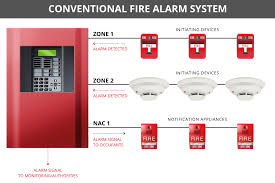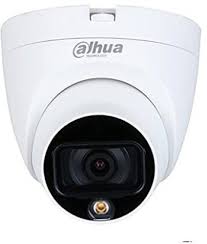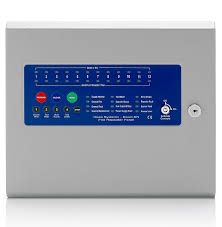Conventional Fire Alarm System: Enhancing Safety and Security
A conventional fire alarm system is a fundamental component of any building’s safety infrastructure. Designed to detect and alert occupants of a potential fire emergency, these systems play a crucial role in minimizing property damage and ensuring the safety of individuals within the premises.
How does a conventional fire alarm system work? At its core, this system consists of various components, including smoke detectors, heat detectors, manual call points, control panels, and notification devices. Smoke detectors are designed to sense the presence of smoke particles in the air, while heat detectors are triggered by elevated temperatures. When either of these sensors is activated, they send a signal to the control panel, which then activates the notification devices such as bells, sirens, or strobe lights to alert occupants of the danger.
One key characteristic of conventional fire alarm systems is their zone-based configuration. In this setup, the building is divided into multiple zones, with each zone connected to a specific circuit on the control panel. When a detector within a particular zone is triggered, the control panel identifies the corresponding zone and activates the notification devices associated with that area. This zoning feature helps pinpoint the location of the potential fire and facilitates an organized evacuation process.
While conventional fire alarm systems have been widely used for decades and are known for their reliability and cost-effectiveness, they do have certain limitations. One drawback is their limited ability to pinpoint the exact location of a fire within a zone since all devices in that zone are activated simultaneously. Additionally, these systems may not provide detailed information about the type or severity of the detected hazard.
In conclusion, conventional fire alarm systems remain an essential tool for safeguarding buildings against fires. By promptly detecting and alerting occupants to potential hazards, these systems contribute significantly to overall safety and security measures. While newer technologies such as addressable fire alarm systems offer more advanced features and capabilities, conventional systems continue to serve as a reliable and effective solution for many applications.
Understanding Conventional Fire Alarm Systems: Key Questions and Answers
- What is a conventional fire alarm system?
- How does a conventional fire alarm system work?
- What are the components of a conventional fire alarm system?
- What is the difference between conventional and addressable fire alarm systems?
- How are zones configured in a conventional fire alarm system?
- What are the limitations of conventional fire alarm systems?
- Are conventional fire alarm systems reliable?
- Can a conventional fire alarm system be integrated with other building systems?
What is a conventional fire alarm system?
What is a conventional fire alarm system?
A conventional fire alarm system is a vital safety mechanism designed to detect and alert individuals of potential fire emergencies within a building. Comprising components such as smoke detectors, heat detectors, manual call points, control panels, and notification devices, this system operates by monitoring the environment for signs of smoke or heat. When triggered, the detectors send signals to the control panel, which then activates audible and visual alarms to warn occupants of the impending danger. The zone-based configuration of conventional fire alarm systems allows for the division of the building into distinct zones, aiding in identifying the location of the potential hazard and facilitating a coordinated evacuation process.
How does a conventional fire alarm system work?
Understanding how a conventional fire alarm system works is essential for ensuring the safety and security of a building. In a conventional system, various components such as smoke detectors, heat detectors, manual call points, control panels, and notification devices work together seamlessly to detect and alert occupants of a potential fire emergency. When smoke or heat is detected by the sensors, they send signals to the control panel, which then activates the notification devices like bells or sirens to warn individuals of the danger. The zoning feature of conventional systems further helps in identifying the specific area where the alarm was triggered, facilitating an organized evacuation process and swift response to the emergency.
What are the components of a conventional fire alarm system?
One frequently asked question about conventional fire alarm systems is: “What are the components of a conventional fire alarm system?” A conventional fire alarm system typically consists of essential components such as smoke detectors, heat detectors, manual call points, control panels, and notification devices. Smoke detectors are designed to detect the presence of smoke particles in the air, while heat detectors are activated by elevated temperatures. Manual call points allow individuals to manually trigger the alarm in case of an emergency. The control panel serves as the central hub of the system, receiving signals from detectors and initiating alerts through notification devices such as sirens or strobe lights. Understanding the role and function of each component is crucial for ensuring the effective operation of a conventional fire alarm system and enhancing overall safety and security.
What is the difference between conventional and addressable fire alarm systems?
One frequently asked question regarding fire alarm systems is the difference between conventional and addressable systems. The main distinction lies in how they identify and communicate information about a potential fire event. In a conventional fire alarm system, the building is divided into zones, and when a detector in a specific zone is triggered, the control panel can only indicate the general area of the alarm without pinpointing the exact location. On the other hand, addressable fire alarm systems offer more precise information by assigning a unique address to each device (such as detectors or call points) connected to the system. This allows for specific identification of the exact location of an activated device, providing quicker response times and easier troubleshooting during emergencies.
How are zones configured in a conventional fire alarm system?
In a conventional fire alarm system, zones are configured by dividing the building into distinct areas or zones, each connected to a specific circuit on the control panel. Typically, each zone represents a separate section of the building where fire detection devices such as smoke detectors and heat detectors are installed. When a detector within a particular zone is triggered by smoke or heat, it sends a signal to the control panel, which then activates the notification devices associated with that specific zone. This zoning setup helps in identifying the location of the potential fire and enables a targeted response to evacuate occupants safely and efficiently. By organizing the building into zones, conventional fire alarm systems streamline the process of detecting and responding to fire emergencies effectively.
What are the limitations of conventional fire alarm systems?
One frequently asked question regarding conventional fire alarm systems is about their limitations. Conventional fire alarm systems have certain drawbacks that users should be aware of. One key limitation is their inability to pinpoint the exact location of a fire within a zone, as all devices in that zone are activated simultaneously when triggered. This lack of precise information may delay response times and hinder efforts to contain the fire effectively. Additionally, conventional systems may not provide detailed insights into the type or severity of the detected hazard, limiting the ability to tailor emergency responses accordingly. Despite these limitations, conventional fire alarm systems remain a cost-effective and reliable option for many buildings and applications.
Are conventional fire alarm systems reliable?
One frequently asked question about conventional fire alarm systems is, “Are conventional fire alarm systems reliable?” Conventional fire alarm systems have been a staple in the industry for many years and are known for their reliability in detecting and alerting occupants to potential fire emergencies. While they may lack some of the advanced features found in newer addressable systems, conventional fire alarm systems are tried and tested solutions that continue to provide effective fire detection and notification capabilities. Regular maintenance, testing, and adherence to safety standards are essential to ensure the ongoing reliability and performance of conventional fire alarm systems.
Can a conventional fire alarm system be integrated with other building systems?
One frequently asked question regarding conventional fire alarm systems is whether they can be integrated with other building systems. The answer is yes, conventional fire alarm systems can indeed be integrated with various other building systems to enhance overall safety and security measures. By integrating the fire alarm system with systems such as access control, HVAC, lighting, and surveillance systems, building owners and operators can create a comprehensive and interconnected network that allows for coordinated responses in the event of an emergency. This integration enables seamless communication between different systems, providing a more efficient and effective means of managing emergencies and ensuring the safety of occupants within the premises.




